Mr.Yu’s Surprise Trip to Nanjing
Mr. Yu was surprised to find that Nanjing, one of the four hottest cities in China, was surprisingly cool during his visit in late June. In addition to attending forums where industry experts shared their insights on intelligent cabins, he also stumbled upon some unexpected insights.
Last week, Mr. Yu was invited to participate in the technology festival held by China Automotive Innovation Corporation (hereinafter referred to as China Automotive Innovation), on the occasion of its one-year anniversary since its establishment.
China Automotive Innovation is a mobility company jointly invested by China North Industries Group, China FAW Group, Dongfeng Motor Corporation, Changan Automobile, and Nanjing Jiangning Development Zone Science and Technology Group, with a registered capital of 16 billion yuan. The company focuses on the R&D and industrialization of intelligent chassis, hydrogen fuel power, and intelligent network linking. It is positioned as the development leader, commonality, platform, and core technology of new energy intelligent networked vehicles.
On one of his mistaken visits to the autonomous driving forum, Mr. Yu happened to catch Dr. Yu Kaibo, founder of Horizon Robotics, giving a talk on “Automotive Intelligent Chip Drives Autonomous Driving Development.” Dr. Yu’s humorous speech style almost made Mr. Yu forget he was in the wrong forum, and he stayed to listen with great interest. Looking back, it was one of the unexpected gains of the trip.
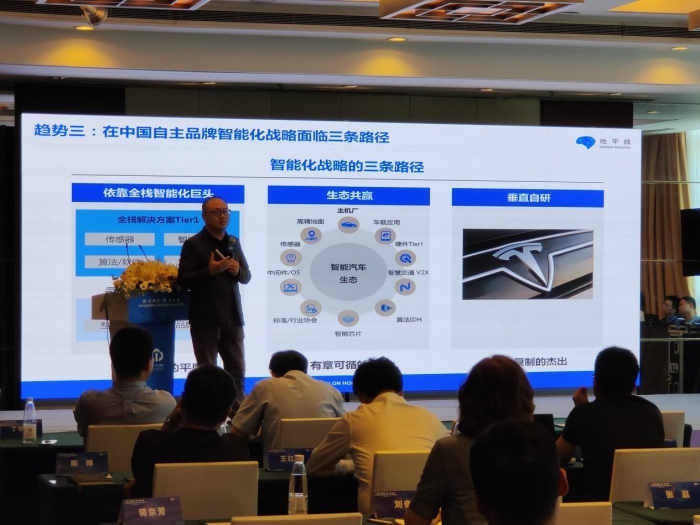
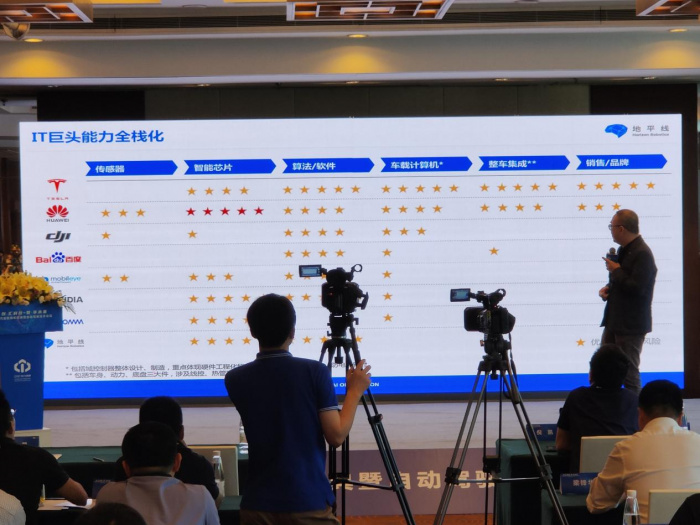
We believe that the information on this page largely represents the domestic automotive chip head players’ understanding of their global counterparts.
Returning to the intelligent cabin forum, Mr. Yu caught an industry expert from iFLYTEK sharing their intelligent assistant for cabins. More specifically, it was iFLYTEK’s AI customization tool.

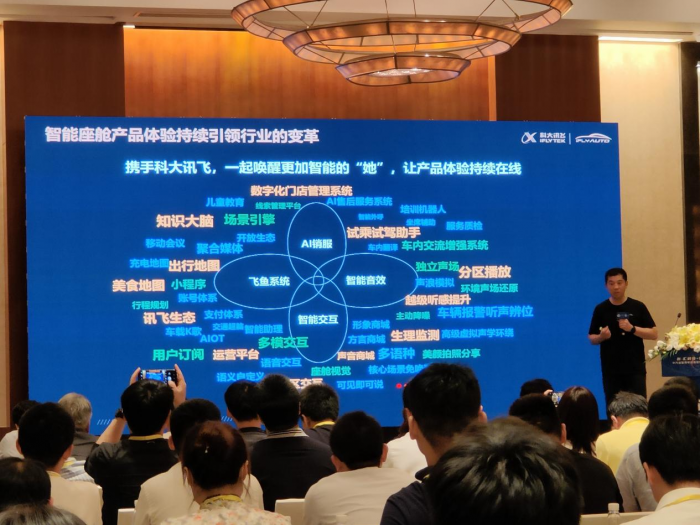
This tool not only generates human characters, but also includes:
Non-human characters – such as the anthropomorphic mascots of major sporting events, such as the Fuwa of the Beijing Olympics in 2008;
Peripheral entities – entities with hardware peripherals as interaction terminals, such as NIO’s in-car AI NOMI, and WoLing Technologies’ Luka series of early education robots;
Abstract images – such as the highly recognizable Baidu Xiaodu’s cute round eyes, and Microsoft Cortana, which is heard but not seen in Windows 10.Emoji – if one day chat emoticons become smart and interactive, it would be quite reminiscent of children’s culture.
This set of tools is somewhat similar to a “character creation system” in a game, which is used for customized development by various enterprises with AI products and capability requirements.
Obviously, iFlytek has its own understanding of the significance of intelligent assistants in the intelligent cockpit scenario:
On the one hand, emotional connection emphasizes the sustainability of interaction between humans and vehicles; on the other hand, it emphasizes the fully accessible service.
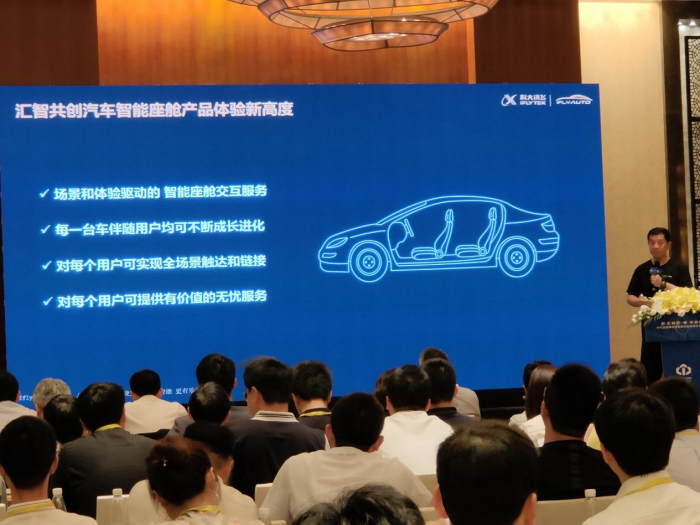
In the subsequent sharing, we also saw the AI customized tool of SenseTime.
SenseTime believes that the “humanization” of in-car AI is becoming an inevitable trend in human-machine interaction in cars.
From an industry perspective, we believe that the relationship between physical in-car robots to screen image virtual assistants, and holographic projection virtual assistants is not a gradual progression.
Instead, automakers and developers will consider factors such as brand positioning, model prices, and user demographics to a greater extent, and the two-dimensional image of virtual assistants, with one-third of the facial area easy to combine, could even cause the majority of people to dislike it.
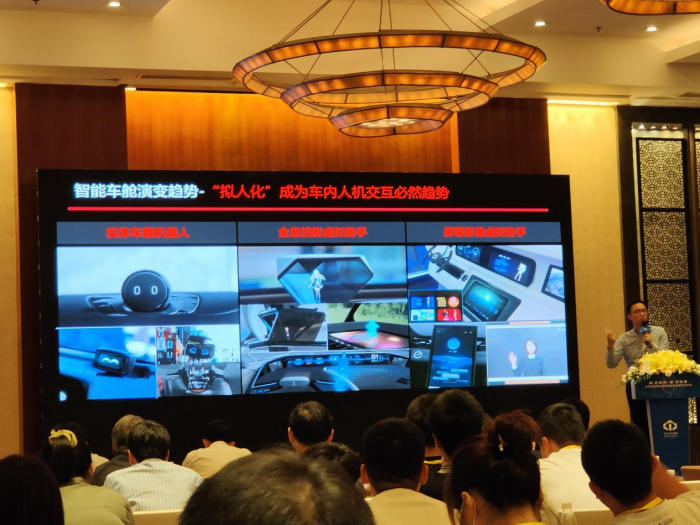
Even the virtual companion’s operational store plan, including customized cycles of virtual images, expressions, clothing, and actions, was seriously written into the PPT.
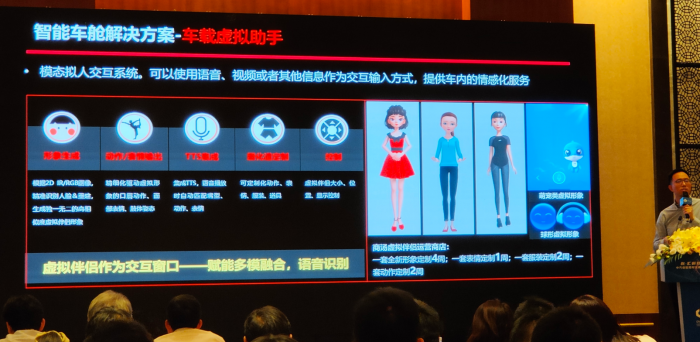
Whether it is the intelligent voice head brand iFlytek or the intelligent visual unicorn SenseTime, they have developed AI customization tool platforms for the B2B market. We have reason to believe that there is indeed a significant demand in this area.
In fact, artificial intelligence here includes six composite disciplines, including computer vision, natural language processing, and deep learning.
Returning to our topic, AI platform companies will provide image customization and refined operational plans according to customer needs, on the one hand; on the other hand, AI platform companies will not only provide image design customization, but also develop capabilities as plug-ins, thereby deriving an ecosystem similar to application markets.We all know that whether it is at the basic or application level, the R&D of AI technology and products is a relatively lengthy process, and continuous investment of funds, time, and talent resources is essential. For most companies, it is obviously more cost-effective to choose to cooperate with BAT, these technology giants that have been engaged in a wide range of areas for a long time, or companies with AI platform capabilities, rather than developing it themselves.
This reminds Mr. Yu of Microsoft’s artificial intelligence, Xiao Bing, who had a past relationship. In July 2020, Microsoft announced that it would spin off the business of AI Xiao Bing into an independent company for operation.
On November 24, 2020, eight months ago, Microsoft China and Xiaobing Company announced in Beijing that they had reached a strategic partnership, focusing on creating commercial solutions for AI+cloud computing for ToB industry customers. The first batch of solutions covers three vertical fields: AI finance, AI cars (highlight), and AI content producers.
Regarding Xiao Bing’s other identities, GeekCar introduced it in its report “Microsoft Xiao Bing Has a Car Version? Actually, This Company Did It” in 2020.
The key point is that at the seventh-generation release conference of Xiao Bing in 2019, the Xiao Bing team, then called Microsoft Xiao Bing, launched the “Avatar Framework” toolkit, which incorporates content creation capabilities such as singing and painting. Based on this toolkit, users can create emotionally intelligent AI assistants, social dialogue robots, AI content creation and IP character roles with complete emotional calculation capabilities, and can drive compatible 3D character models for real-time interaction.
For example, the Xiao Bing team regards personalized AI Beings as the outlet for AI capabilities. Specifically, we won’t see the Xiao Bing team launch independent audio editing software, but the Avatar Framework toolkit includes tools for creating or singing.
In the most recent media interview, Li Di, the CEO of Xiaobing Company, said that in the existing direction, Xiaobing has cooperated with more automakers, including some new forces in car-making.
Clearly, the Xiao Bing team is trying to establish a pipeline for AI Beings and provide AI capability support platforms for various industries as a new business format.Here we can see that Xiaoice’s style is a bit more idealistic compared to iFLYTEK and SenseTime, who already have their own stable business areas. Xiaoice is trying to “empower” various industries to the fullest.
Regarding automakers, high R&D costs, long development cycles, intense competition for AI talents, vastly different market realities across different countries and regions, and varying demands from different groups on in-car experiences all contribute to the increasing trend of automakers working with multiple AI solution providers to seek optimal solutions for intelligent in-car experiences customization.
Regarding AI solution providers, selling tool software is no longer a guaranteed profit in today’s market. The emphasis on “experience” in consumer markets has determined that upstream vendors as customers must differentiate and make customer experiences their competitive edge. The partnership between Xingxing and domestic giants such as Huawei and iFLYTEK to build the country’s automotive experience is a good example. AI solution providers need more customers, more scenarios, more data, and a bigger share to build their own ecological barriers.
Regarding users, the concerns are simpler. An industry report shows that intelligent in-car experiences are becoming increasingly important factors in influencing consumer decisions for smart cars. We believe that most users do not care about what technologies manufacturers and their partners use, nor will they buy into the engineer thinking that “if my stuff is good, there must be a market for it.” Being useful, easy-to-use, and having choices are the hard truths.
In a sense, what iFLYTEK, SenseTime, and Xiaoice are doing or are going to do is also irreplaceably driving automakers, as customers, forward.
This article is a translation by ChatGPT of a Chinese report from 42HOW. If you have any questions about it, please email bd@42how.com.
